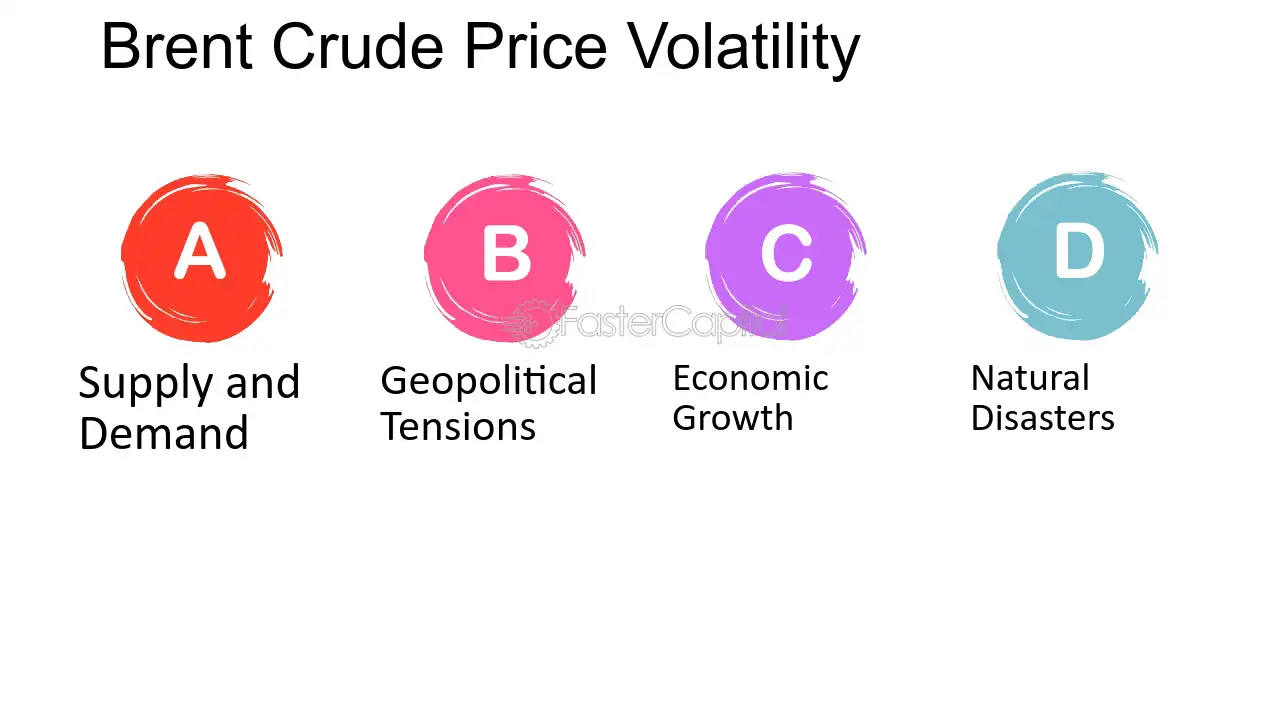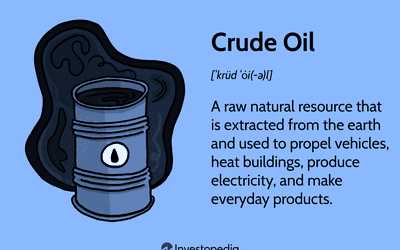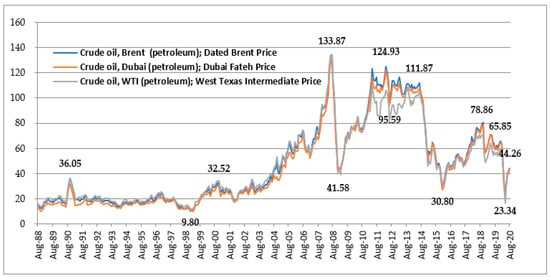What is North Sea Brent Crude?
North Sea Brent Crude is a type of oil that is extracted from the North Sea. It is one of the most widely traded and important crude oil benchmarks in the world. The term “Brent” refers to the oil field in the North Sea where the crude oil is produced.
North Sea Brent Crude is known for its high quality and low sulfur content, which makes it desirable for refining into gasoline and diesel fuel. It is also used as a benchmark for pricing other types of crude oil around the world.
The production of North Sea Brent Crude is dominated by several countries, including the United Kingdom, Norway, and Denmark. These countries have invested heavily in offshore drilling and infrastructure to extract the oil from beneath the sea floor.
The extraction process for North Sea Brent Crude involves drilling wells into the sea floor and using platforms and pipelines to transport the oil to onshore facilities. From there, it is transported to refineries around the world for further processing.
Overall, North Sea Brent Crude plays a crucial role in the global oil market, influencing prices and serving as a key indicator of supply and demand. Its high quality and widespread availability make it an important resource for meeting the world’s energy needs.
| Key Features of North Sea Brent Crude |
|---|
| High quality |
| Low sulfur content |
| Widely traded |
| Used as a benchmark for pricing |
| Produced in the North Sea |
Why is North Sea Brent Crude important?

North Sea Brent Crude is one of the most important benchmarks for oil prices worldwide. It is a light, sweet crude oil that is extracted from the North Sea region, specifically from the Brent oilfield. This oil is highly valued for its quality and is used as a reference point for pricing other crude oils.
Here are a few reasons why North Sea Brent Crude is important:
1. Global Pricing: North Sea Brent Crude serves as a global benchmark for oil prices. It is used as a reference point for pricing crude oil in the international market. The price of Brent Crude is widely followed by traders, investors, and industry experts around the world.
2. Market Stability: The availability of a reliable benchmark like North Sea Brent Crude helps in maintaining stability in the oil market. It provides a common reference point for buyers and sellers, facilitating transparent and efficient trading.
3. Supply and Demand Analysis: The price of North Sea Brent Crude reflects the supply and demand dynamics in the oil market. It is closely watched by analysts and economists to assess the global oil market conditions and make informed decisions.
4. Hedging and Risk Management: Brent Crude futures contracts are widely traded, allowing market participants to hedge against price fluctuations and manage their risk exposure. This helps oil producers, consumers, and investors to protect themselves from volatile oil prices.
5. Industry Insights: The performance of North Sea Brent Crude provides valuable insights into the overall health of the oil industry. Changes in Brent Crude prices can indicate shifts in global oil demand, geopolitical tensions, production disruptions, and other factors affecting the oil market.
History
Before the discovery of North Sea Brent Crude, the global oil market was dominated by the Middle East, particularly Saudi Arabia. However, the oil crisis in 1973 and subsequent geopolitical tensions in the region highlighted the need for diversification of oil sources.
Despite the decline in production, North Sea Brent Crude remains an important benchmark for oil prices, as it represents the quality and price of crude oil in the European market. The Brent crude oil futures contract is widely traded on international commodity exchanges, providing investors and market participants with a transparent and liquid market for hedging and speculation.
Discovery of North Sea Brent Crude

The discovery of North Sea Brent Crude was a significant event in the history of the oil industry. It all began in the late 1960s when exploration activities in the North Sea region intensified. Companies were searching for new oil fields, and in 1971, they struck gold.
On August 10, 1971, the first commercial discovery of oil was made in the Brent oilfield, located in the North Sea between the Shetland Islands and Norway. The Brent oilfield turned out to be a game-changer, as it was one of the largest oilfields ever discovered in the North Sea.
The discovery of North Sea Brent Crude brought about a revolution in the oil market. Prior to this, the Middle East dominated the oil industry, but with the discovery of Brent Crude, Europe gained a significant foothold in the global oil market.
The Brent oilfield was named after the Brent goose, a migratory bird that frequents the North Sea region. The name was chosen to honor the environmental considerations taken during the exploration and production of oil in the area.
Since its discovery, North Sea Brent Crude has become one of the most important benchmarks for global oil prices. Its high quality and low sulfur content make it highly sought after by refineries around the world.
The discovery of North Sea Brent Crude not only transformed the oil industry but also had a profound impact on the economies of the countries involved. It led to the development of a thriving oil and gas sector in the North Sea region, creating jobs and driving economic growth.
Today, North Sea Brent Crude continues to play a crucial role in the global oil market, influencing oil prices and shaping the energy landscape. Its story is a testament to the power of exploration and innovation in unlocking the potential of natural resources.
Development of North Sea Brent Crude market

The development of the North Sea Brent Crude market has been a significant milestone in the global oil industry. Since its discovery in the 1970s, the Brent field has become one of the most important sources of crude oil in the world.
Here are some key points about the development of the North Sea Brent Crude market:
1. Exploration and Production
The exploration and production of North Sea Brent Crude involved the collaboration of various oil companies and governments. The process began with seismic surveys to identify potential oil reserves beneath the seabed. Once the reserves were confirmed, drilling operations were initiated to extract the crude oil.
2. Infrastructure and Transportation
To support the production and export of North Sea Brent Crude, a vast infrastructure network was developed. This included the construction of offshore platforms, pipelines, and storage facilities. Tankers were also utilized to transport the crude oil to refineries and markets around the world.
3. Market Influence
The North Sea Brent Crude market has had a significant influence on the global oil market. The pricing of Brent Crude serves as a benchmark for other types of crude oil, and it is widely used in futures contracts and trading activities. The market has also attracted investments from various stakeholders, including financial institutions and speculators.
Overall, the development of the North Sea Brent Crude market has played a crucial role in meeting the global demand for oil and shaping the dynamics of the oil industry. Its continued production and market presence ensure a stable supply of crude oil for various industries and economies worldwide.
Characteristics
North Sea Brent Crude is known for its unique set of characteristics that make it one of the most sought-after crude oils in the world.
First and foremost, Brent Crude is considered a light crude oil, which means it has a relatively low density and viscosity. This makes it easier to extract, transport, and refine compared to heavier crude oils.
Additionally, Brent Crude is known for its sweet nature, meaning it has a low sulfur content. This is important because sulfur can be corrosive and can cause environmental pollution when burned. The low sulfur content of Brent Crude makes it a cleaner and more environmentally friendly option.
Another characteristic of Brent Crude is its high API gravity. API gravity is a measure of the density of a liquid relative to water, and a higher API gravity indicates a lighter oil. The high API gravity of Brent Crude makes it ideal for producing gasoline and other light distillates.
Furthermore, Brent Crude is known for its stable production. The North Sea region has a long history of oil production, and the infrastructure and expertise in place ensure a consistent and reliable supply of Brent Crude.
Lastly, Brent Crude is a benchmark oil, meaning it serves as a reference point for pricing other crude oils around the world. The price of Brent Crude is widely used as a benchmark for global oil prices, making it an important indicator for the oil market.

Emily Bibb simplifies finance through bestselling books and articles, bridging complex concepts for everyday understanding. Engaging audiences via social media, she shares insights for financial success. Active in seminars and philanthropy, Bibb aims to create a more financially informed society, driven by her passion for empowering others.
